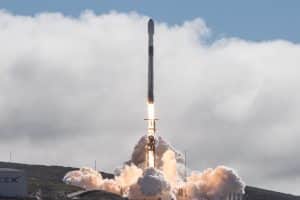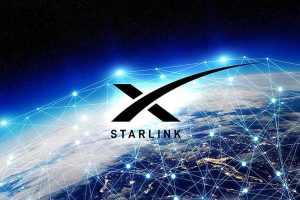- 🚀 SpaceX launched 22 Starlink satellites using a new Falcon 9 first stage booster for the first time.
- 🌎 The launch occurred from Cape Canaveral Space Launch Complex in Florida.
- 🛰️ The satellites successfully reached low-Earth orbit about an hour post-launch.
- 🌊 The rocket’s first stage landed on the ‘A Shortfall from Gravitas’ droneship in the Atlantic Ocean.
- 🔄 This was the 80th successful droneship landing for SpaceX’s Falcon 9 first stage.
- 💧 The new booster experienced moisture intrusion during transport, requiring corrective measures before launch.
- 🛠️ Falcon 9’s next mission with this booster is scheduled no earlier than September 24 for the Crew-i launch.
SpaceX continues to push the boundaries of space travel and satellite deployment with its latest launch of 22 Starlink satellites, utilizing a brand-new Falcon 9 first stage booster. This event not only marks a significant milestone in SpaceX’s ambitious Starlink project but also highlights the company’s resilience and adaptability in overcoming challenges. Let’s delve deeper into the recent launch, the intricate workings of Starlink satellites, and the logistics that underpin these monumental achievements.
The Launch: A First of Many
SpaceX’s recent launch from the Cape Canaveral Space Launch Complex in Florida was a testament to innovation. For the first time, a newly minted Falcon 9 first stage booster was employed, showcasing the company’s commitment to continuously evolving its technology.
- Launch Details: The Falcon 9 rocket lifted off at approximately 9:20 a.m., carrying 22 Starlink satellites destined for low-Earth orbit.
- Successful Deployment: Just under an hour after takeoff, the satellites were successfully deployed, marking another achievement in SpaceX’s mission to provide global broadband coverage.
A Landmark Landing
The success of a SpaceX mission is often measured by its ability to safely return and reuse its rockets. This mission was no exception.
- Droneship Landing: The first stage of the Falcon 9 rocket completed its journey by landing on the ‘A Shortfall from Gravitas’ droneship in the Atlantic Ocean, marking the 80th successful droneship landing for SpaceX.
Challenges and Resilience
Even with a remarkable track record, this mission encountered hurdles that required ingenuity and swift action.
- Moisture Intrusion: The new booster faced a moisture intrusion issue during transport. The desiccant system intended to keep the interior dry underperformed, necessitating repairs and replacements before the launch.
- Readiness for Future: Despite these setbacks, SpaceX has scheduled the next mission using this booster for September 24 for the Crew-i launch, underscoring its ability to efficiently manage logistics and operations.
Understanding Starlink Satellites
What is the function of Starlink satellites?
Starlink satellites are designed to provide high-speed internet across the globe, particularly in underserved and remote areas. They form a constellation that orbits Earth in low-Earth orbit, ensuring minimal latency and broad coverage.
SpaceX’s Launch Cadence
How often does SpaceX launch using Falcon 9 boosters?
SpaceX frequently utilizes its Falcon 9 boosters due to their reusability, which significantly reduces costs. The company’s strategic launch schedule has facilitated numerous missions, with some boosters being reused up to 15 times.
Logistical Challenges in Rocket Transport
What are the challenges of transporting rocket equipment?
Transporting rocket components involves meticulous planning:
- Environmental Control: Equipment must be protected from environmental variables like humidity and temperature, as seen with the recent moisture issue.
- Secure Transport: Rockets require specialized vehicles and infrastructure for safe movement to launch sites.
- Logistical Precision: Timing is crucial to align with launch schedules, requiring adept coordination and resource management.
Conclusion
SpaceX’s ability to innovate and overcome challenges is central to its success. The launch of 22 Starlink satellites with a new Falcon 9 booster is a clear demonstration of this capability. As Starlink aims to democratize internet access globally, SpaceX’s persistent innovation continues to pave the way for future advancements in space exploration and technology.





